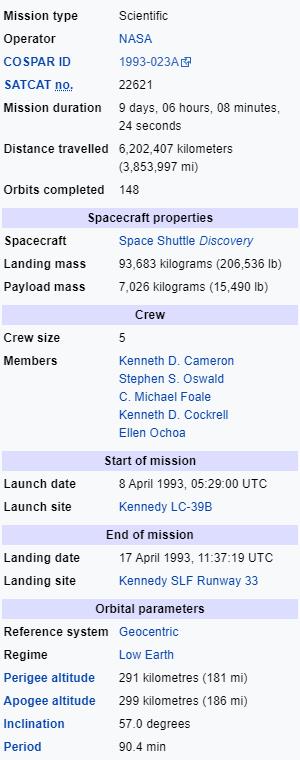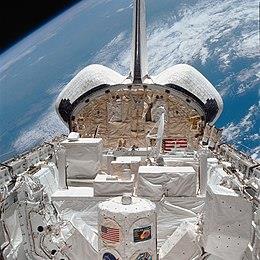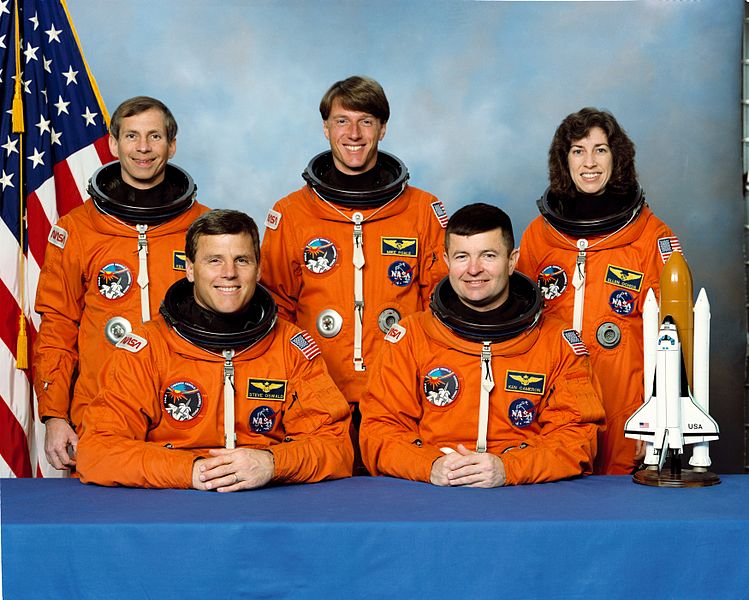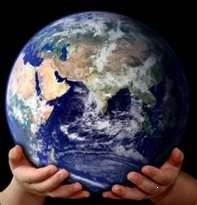Kenneth D. Cameron
(Second Space Flight)
Stephen S. Oswald
(Second Space Flight) Mission Specialist 1:
C. Michael Foale
(First Space Flight) Mission Specialist 2:
Kenneth D. Cockrell
(First Space Flight) Mission Specialist 3:
Ellen Ochoa
(Second Space Flight)
STS-56 was a Space Shuttle Discovery mission to perform special experiments. The mission launched from Kennedy Space Centre, Florida, on 8 April 1993.
A free template by Lucknowwebs.com for WYSIWYG WebBuilder 8
Study
Research
Main Index
Space Cosmology
Science Research
*
About
Science Research
Science Theories
Desk
Site Map
BookShelf
Copyright © by Nigel G Wilcox · All Rights reserved · E-Mail: ngwilcox100@gmail.com
Designed by Nigel G Wilcox
Powered By AM3L1A
Pages within this section: USA Shuttle Mission Flights
STS-56
Pages within this section:
The Space Shuttle Missions
Astronauts:
STS-56
Command Pilot:
Pilot:
53
M
8
SM
Sub-Menu
menu
-
54
55
56
57
58
59
60
The primary payload of the flight was the Atmospheric Laboratory for Applications and Science-2 (ATLAS-2), designed to collect data on the relationship between the sun's energy output and Earth's middle atmosphere and how these factors affect the ozone layer. It included six instruments mounted on a Spacelab pallet in the cargo bay, with the seventh mounted on the wall of the bay in two Get Away Special canisters. Atmospheric instruments included the Atmospheric Trace Molecule Spectroscopy (ATMOS) experiment, the Millimeter Wave Atmospheric Sounder (MAS), and the Shuttle Solar Backscatter Ultraviolet/A (SSBUV/A) spectrometer (on the cargo bay wall). Solar science instruments were the Solar Spectrum Measurement (SOLSPEC) instrument, the Solar Ultraviolet Irradiance Monitor (SUSIM), and the Active Cavity Radiometer (ACR) and Solar Constant (SOLCON) experiments.
ATLAS-2 is one element of NASA's Mission to Planet Earth program. All seven ATLAS-2 instruments first flew on ATLAS-1 during STS-45, and flew a third time in late 1994 on STS-66.
On 11 April, the crew used the remote manipulator arm to deploy the Shuttle Point Autonomous Research Tool for Astronomy-201 (SPARTAN-201), a free-flying science instrument platform designed to study velocity and acceleration of the solar wind and observe the sun's corona. Collected data was stored on tape for playback after return to Earth. SPARTAN-201 was retrieved on 13 April.
The crew also made numerous radio contacts to schools around the world using the Shuttle Amateur Radio Experiment II (SAREX II), including brief radio contact with the Russian Mir space station, the first such contact between Shuttle and Mir using amateur radio equipment.
It was arguably the first time that the astronauts received amateur television video from the ham radio club station (W5RRR) at JSC.
Other cargo bay payloads were the Solar Ultraviolet Experiment (SUVE), sponsored by Colorado Space Grant Consortium and located in a Get Away Special canister on the cargo bay wall.
The middeck payloads were the Commercial Materials Dispersion Apparatus Instrumentation Technology Associates Experiment (CMIX), the Physiological and Anatomical Rodent Experiment (PARE), Space Tissue Loss (STL-1) experiment, the Cosmic Ray Effects and Activation Monitor (CREAM) experiment. the Hand-held, Earth-oriented, Real-time, Cooperative, User-friendly, Location-targeting and Environmental System (HERCULES), Radiation Monitoring Equipment III (RME III), and an Air Force Maui Optical Site (AMOS) calibration test.


Components of the ATLAS-2 laboratory in the payload bay of Discovery
SPARTAN-201
















